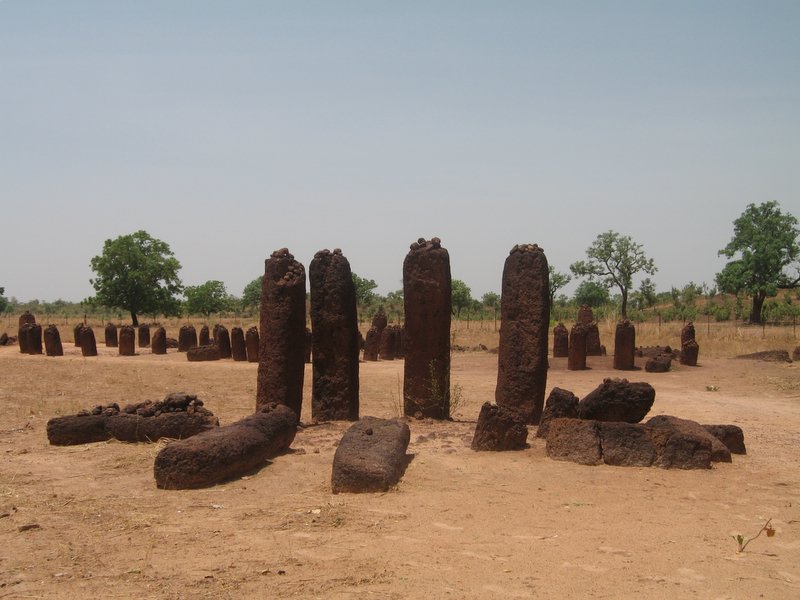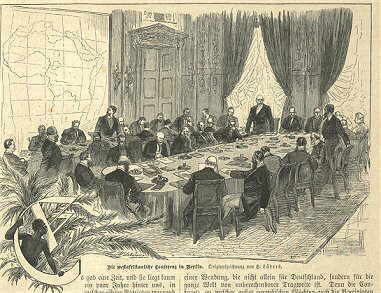|
Gambia–Senegal Border
The Gambia–Senegal border is 749 km (465 mi) in length and runs on either side of the Gambia river. Description In the north-west, the border starts at the Atlantic coast at Jinnak Creek, and then proceeds eastwards via a straight line. Just to the west of the Gambian town of Ngeyen Sanjal the border proceeds to roughly parallel the north bank of the Gambia river at a distance of about 10 km, bending round in the far east to encompass Koina and Kantale Kunde within Gambian territory, before proceeding westwards again at about 10 km parallel to the river's southern bank. Just east of Dumbutu (Gambia) the boundary veers south in a straight line, then turns at a right angle to the west, proceeding via a straight line before reaching the San Pedro river; the boundary then follows this river out to the Atlantic Ocean. History France and Britain began exploring and trading along the West African coast from the 17th century, and the two powers contended for supremacy ... [...More Info...] [...Related Items...] OR: [Wikipedia] [Google] [Baidu] |
Gambia River
The Gambia River (formerly known as the River Gambra) is a major river in West Africa, running from the Fouta Djallon plateau in north Guinea westward through Senegal and The Gambia to the Atlantic Ocean at the city of Banjul. It is navigable for about half that length. The river is strongly associated with The Gambia, the smallest country in mainland Africa, which occupies the downstream half of the river and its two banks. Geography The Gambia River runs a total length of . From the Fouta Djallon, it runs northwest into the Tambacounda Region of Senegal, where it flows through the Parc National du Niokolo Koba, then is joined by the Nieri Ko and and passing through the Barrakunda Falls before entering the Gambia at Koina. At this point, the river runs generally west, but in a meandering course with a number of oxbows, and about from its mouth it gradually widens, to over wide where it meets the sea. Crossings There are several bridges crossing the river. The largest an ... [...More Info...] [...Related Items...] OR: [Wikipedia] [Google] [Baidu] |
Dumbutu
Dumbutu (also called Dumbuttu or Dumbuto) is a village in the Gambia The Gambia,, ff, Gammbi, ar, غامبيا officially the Republic of The Gambia, is a country in West Africa. It is the smallest country within mainland AfricaHoare, Ben. (2002) ''The Kingfisher A-Z Encyclopedia'', Kingfisher Publicatio ... and it is located in the Lower River Division. References Populated places in the Gambia {{Gambia-geo-stub ... [...More Info...] [...Related Items...] OR: [Wikipedia] [Google] [Baidu] |
Atlantic Ocean
The Atlantic Ocean is the second-largest of the world's five oceans, with an area of about . It covers approximately 20% of Earth's surface and about 29% of its water surface area. It is known to separate the " Old World" of Africa, Europe and Asia from the "New World" of the Americas in the European perception of the World. The Atlantic Ocean occupies an elongated, S-shaped basin extending longitudinally between Europe and Africa to the east, and North and South America to the west. As one component of the interconnected World Ocean, it is connected in the north to the Arctic Ocean, to the Pacific Ocean in the southwest, the Indian Ocean in the southeast, and the Southern Ocean in the south (other definitions describe the Atlantic as extending southward to Antarctica). The Atlantic Ocean is divided in two parts, by the Equatorial Counter Current, with the North(ern) Atlantic Ocean and the South(ern) Atlantic Ocean split at about 8°N. Scientific explorations of the A ... [...More Info...] [...Related Items...] OR: [Wikipedia] [Google] [Baidu] |
1013359-Border Gambia Senegal-Senegal
1 (one, unit, unity) is a number representing a single or the only entity. 1 is also a numerical digit and represents a single unit of counting or measurement. For example, a line segment of ''unit length'' is a line segment of length 1. In conventions of sign where zero is considered neither positive nor negative, 1 is the first and smallest positive integer. It is also sometimes considered the first of the infinite sequence of natural numbers, followed by 2, although by other definitions 1 is the second natural number, following 0. The fundamental mathematical property of 1 is to be a multiplicative identity, meaning that any number multiplied by 1 equals the same number. Most if not all properties of 1 can be deduced from this. In advanced mathematics, a multiplicative identity is often denoted 1, even if it is not a number. 1 is by convention not considered a prime number; this was not universally accepted until the mid-20th century. Additionally, 1 is ... [...More Info...] [...Related Items...] OR: [Wikipedia] [Google] [Baidu] |
France
France (), officially the French Republic ( ), is a country primarily located in Western Europe. It also comprises of Overseas France, overseas regions and territories in the Americas and the Atlantic Ocean, Atlantic, Pacific Ocean, Pacific and Indian Oceans. Its Metropolitan France, metropolitan area extends from the Rhine to the Atlantic Ocean and from the Mediterranean Sea to the English Channel and the North Sea; overseas territories include French Guiana in South America, Saint Pierre and Miquelon in the North Atlantic, the French West Indies, and many islands in Oceania and the Indian Ocean. Due to its several coastal territories, France has the largest exclusive economic zone in the world. France borders Belgium, Luxembourg, Germany, Switzerland, Monaco, Italy, Andorra, and Spain in continental Europe, as well as the Kingdom of the Netherlands, Netherlands, Suriname, and Brazil in the Americas via its overseas territories in French Guiana and Saint Martin (island), ... [...More Info...] [...Related Items...] OR: [Wikipedia] [Google] [Baidu] |
Senegambia
The Senegambia (other names: Senegambia region or Senegambian zone,Barry, Boubacar, ''Senegambia and the Atlantic Slave Trade'', (Editors: David Anderson, Carolyn Brown; trans. Ayi Kwei Armah; contributors: David Anderson, American Council of Learned Societies, Carolyn Brown, University of Michigan. Digital Library Production Service, Christopher Clapham, Michael Gomez, Patrick Manning, David Robinson, Leonardo A. Villalon), Cambridge University Press (1998) p. 5,(Retrieved 15 March 2019) Senegaámbi in Wolof language, Wolof) is, in the narrow sense, a historical name for a geographical region in West Africa, which lies between the Senegal River in the north and the Gambia River in the south. However, there are also text sources which state that Senegambia is understood in a broader sense and equated with the term the Western region. This refers to the coastal areas between Senegal and Sierra Leone, where the inland border in the east was not further defined. Geographically, t ... [...More Info...] [...Related Items...] OR: [Wikipedia] [Google] [Baidu] |
Gambia Colony And Protectorate
The Gambia Colony and Protectorate was the British colonial administration of the Gambia from 1821 to 1965, part of the British Empire in the New Imperialism era. The colony was the immediate area surrounding Bathurst (now Banjul), and the protectorate was the inland territory situated around the Gambia River, which was declared in 1894. History The foundation of the colony was Fort James and Bathurst, where British presence was established in 1815 and 1816, respectively. For various periods in its existence it was subordinate to the Sierra Leone Colony. However, by 1888 it was a colony in its own right with a permanently appointed Governor. The boundaries of the territory were an issue of contention between the British and French authorities due to the proximity to French Senegal. Additionally, on numerous occasions the British government had attempted to exchange it with France for other territories, such as on the upper Niger River. France and Britain agreed in 1889 in ... [...More Info...] [...Related Items...] OR: [Wikipedia] [Google] [Baidu] |
Edinburgh University Press
Edinburgh University Press is a scholarly publisher of academic books and journals, based in Edinburgh, Scotland. History Edinburgh University Press was founded in the 1940s and became a wholly owned subsidiary of the University of Edinburgh in 1992. Books and journals published by the press carry the imprimatur of The University of Edinburgh. All proposed publishing projects are appraised and approved by the Press Committee, which consists of academics from the university. Since August 2004, the Press has had Charitable Status. In November 2013, Edinburgh University Press acquired Dundee University Press for an undisclosed sum, with a stated aim to increase textbook and digital sales, with a particular focus on law. Brodies advised Edinburgh University Press on the terms of the acquisition. Publishing Edinburgh University Press publishes a range of research publications, which include scholarly monographs and reference works, as well as materials which are available on-line. ... [...More Info...] [...Related Items...] OR: [Wikipedia] [Google] [Baidu] |
Scramble For Africa
The Scramble for Africa, also called the Partition of Africa, or Conquest of Africa, was the invasion, annexation, division, and colonisation of Africa, colonization of most of Africa by seven Western Europe, Western European powers during a short period known as New Imperialism (between 1881 and 1914). The 10 percent of Africa that was under formal European control in 1870 increased to almost 90 percent by 1914, with only Liberia and Ethiopian Empire, Ethiopia remaining independent. The Berlin Conference of 1884, which regulated European colonization and trade in Africa, is usually accepted as the beginning. In the last quarter of the 19th century, there were considerable political rivalries within the empires of the European continent, leading to the African continent being partitioned without wars between European nations. The later years of the 19th century saw a transition from "Informal empire, informal imperialism" – military influence and economic dominance – to di ... [...More Info...] [...Related Items...] OR: [Wikipedia] [Google] [Baidu] |
Berlin Conference
The Berlin Conference of 1884–1885, also known as the Congo Conference (, ) or West Africa Conference (, ), regulated European colonisation and trade in Africa during the New Imperialism period and coincided with Germany's sudden emergence as an imperial power. The conference was organized by Otto von Bismarck, the first chancellor of Germany. Its outcome, the General Act of the Berlin Conference, can be seen as the formalisation of the Scramble for Africa, but some historians warn against an overemphasis of its role in the colonial partitioning of Africa, and draw attention to bilateral agreements concluded before and after the conference. The conference contributed to ushering in a period of heightened colonial activity by European powers, which eliminated or overrode most existing forms of African autonomy and self-governance. Of the fourteen countries being represented, six of them – Austria-Hungary, Russia, Denmark, the Netherlands, Sweden–Norway, and the Unite ... [...More Info...] [...Related Items...] OR: [Wikipedia] [Google] [Baidu] |
Senegambia Confederation
Senegambia, officially the Senegambia Confederation or Confederation of Senegambia, was a loose confederation in the late 20th century between the West African countries of Senegal and its neighbour the Gambia, which is almost completely surrounded by Senegal. The confederation was founded on 1 February 1982 following an agreement between the two countries signed on 12 December 1981. It was intended to promote cooperation between the two countries, but was dissolved by Senegal on 30 September 1989 after the Gambia refused to move closer toward union. The Senegambia Confederation should not be confused with the historic Senegambia region, generally shortened to ''the Senegambia''. Background Early history As a political unit, Senegambia was created by duelling French and English colonial forces in the region. Competition between the French and English started in the late 16th century when merchants from both nations started to establish trading centres in the region. Al ... [...More Info...] [...Related Items...] OR: [Wikipedia] [Google] [Baidu] |





.jpg)